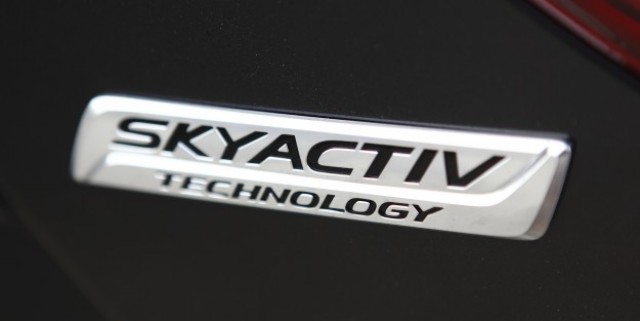
Mazda is aiming to go where the likes of Honda, General Motors and Mercedes have tried before, by developing an engine that combines the efficiency of a diesel but the high power and cleanliness of a petrol engine.
The Japanese brand has revealed the first secrets of its next-generation range of Skyactiv engines, which first appeared singularly in the Mazda 3 SP20 in 2011 and are currently used in the CX-5 SUV, 6 medium car and next-gen 3 due in January.
Those petrol and diesel engines are notable for having, respectively, the highest and lowest compression ratios – both with an air-to-fuel mixture in the combustion chamber of 14:1 – for their type, in the petrol’s case almost double that of competitor petrol engines.
Higher compression ratios boost engine efficiency, though the challenge for engineers has always included issues of excessive cylinder temperatures and detonation – the exploding rather than smooth burning of fuel – that can cause serious engine damage.
For its new petrol engines, however, Mazda says it is aiming to compress the air/fuel mixture in the cylinders to an eighteenth (18:1) of its original volume by using both auto ignition (or compression ignition as singularly used in diesels) and spark ignition (via spark plugs as singularly used in petrols).
Mazda believes it can meet future emissions regulations without downsizing engines and adding turbochargers like many other car makers and instead focusing on making a lean combustion process called homogenous charge compression ignition (HCCI) harmonised across its range of 1.5-, 2.0- and 2.5–litre petrol engines.
It would be a move that would trump Honda, which was working on HCCI engines almost a decade ago, as well as Mercedes, which showcased a DiesOtto engine in 2009 that aimed to combine the benefits of diesel and petrol engines.
“There are many [efficiency] losses in internal combustion engines, but if we control seven key factors we can improve efficiency,” said Ichiro Hirose, Mazda’s vice president of research and development, at a Mazda tech forum in Yokohama, Japan. “Improving driving performance and fuel economy is not easy, but with HCCI we are aiming for a 30 per cent improvement in thermal efficiency.
Hirose said Mazda is aiming to lift HCCI to about half the engine load – igniting the air/fuel mix through raised cylinder temperature and pressure for low and high engine speeds – before bringing spark ignition into play for higher revs.
A higher octane fuel wouldn’t be mandatory with the company saying 91 RON unleaded would be useable, while the engines could also use a variety of fuels.
He also added that this engine development meant Mazda didn’t need to follow other manufacturers by adding more and more gear ratios to transmissions for the sake of consumption.
For third-generation Skyactiv, Mazda says it is developing an ‘adiabatic’ cylinder coating designed to limit exhaust and cooling losses.
“If we get Gen 2 or 3 engine [with HCCI and adiabatic application] the [engine’s] sweet spot is expanded … and regardless of speed you get good fuel consumption.
“Six [gears] is enough by a fuel economy viewpoint.”
There would also be benefits for a hybrid set-up, with such engines requiring only a small, lightweight battery pack because an electric motor would be needed for low speeds only.
Mazda reduced its average fleet CO2 emissions by 30 per cent between 2001 and 2008 and is looking to make the same jump between 2008 and 2015.
It took Mazda about five years to bring its first-generation Skyactiv to fruition, which means the HCCI second-generation aren’t likely to appear until the second half of this decade – potentially first in the second-generation CX-5 due in about 2017/2018.
Mazda continues to toy with other technology, including a Mazda 3 Hybrid just released in Japan that borrows Toyota petrol-electric components, a Mazda 3 compressed natural gas (CNG) model, as well as a Mazda 2 electric car that uses a compact rotary engine as a range-extending device.





